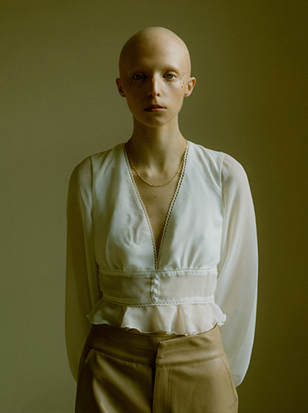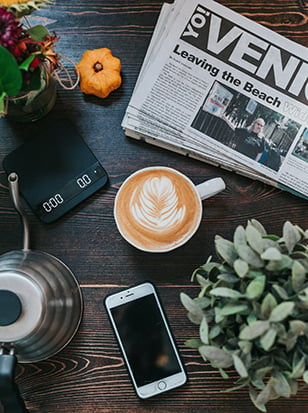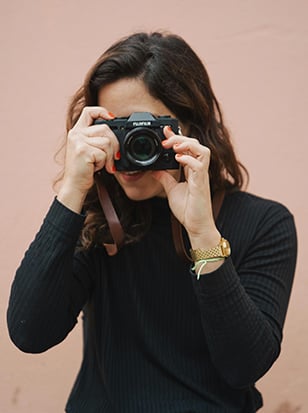
UK Black Female Photographers – UKBFTOG – is a photographic community who is dedicated to amplifying the voices of black female photographers and videographers in the UK. Speaking with UKBFTOG Curator and Photographer, Dominique Nok, we discuss the community’s mission that strives for fairness and equality in a male-dominated industry and to discover the creative talent that so often is missed.
The “Living The Dream'' Exhibition, held at FUJIFILM House of Photography, is a celebration of the UKBFTOG’s community talent. Showcasing 51 black female photographers, this exhibition invites us to witness a moment in history - a moment in history where black female artists are given a platform to share their work, have their voices amplified and connect with like-minded individuals.
Click on the links below to learn more about these upcoming exhibitions.
Leo White: How do you believe amplifying the voices of black female artists contributes to greater diversity and inclusivity in the art world?
Dominique Nok: Creatives tell stories through their art by communicating topics from their perspective or they create purely to express whatever they want to exist in the world. Through their creative processes, they often convey mind-expanding and inspiring matters offering new ways of seeing and of using other senses. This can be considered wholesome or therapeutic and sometimes (thought) provoking and challenging. It usually triggers something. For centuries, all over the world, artists have been creating beautiful art and have communicated their stories through their channels within their communities.
However, in the art world as we know it today, a select few have been given the recognition and acknowledgement for their artistic ways of storytelling. By having UKBFTOG’s Living the Dream exhibition, we make known that there are more wonderful stories out there created by Black female photographers, who are extremely talented and keen to showcase their perspective of the world. By making themselves visible, the exhibitors collectively manifest they cannot be overlooked or ignored. Even though this exhibition can serve as a conversation starter and contribute to the discussion that there should be more opportunities like these, Living the Dream is mainly a celebration of UKBFTOG’s talented community and sisterhood.

Image by Jo Sealy
LW: In what ways do you think the art industry can do a better job of supporting and promoting the work of black female artists?
DN: We believe transformation starts from the top down. If certain structures within the leadership of art institutions, galleries and art education maintain the same, with the same people or with people who are identical to the people they replaced, real change will not happen.
History has unfortunately proven that within certain known structures there seems to be no place for Black female artists unless they serve a specific purpose that doesn’t really benefit them. We have noticed a wonderful shift of diversification from a predominately white male board to the inclusion of more female figures. But most of these women are white.
Here, the challenge is to diversify it further with more women from the African (diaspora), Asian, Brown, and the Global Majority. Once this happens, we believe that the support and promotion of Black female artists will follow. People usually gravitate to people who look like them. The support and promotion will not be an afterthought or a point that needs to be ticked off a list. It will become normal to give these women access to the art spaces and offer them equal opportunities to develop their practices and connect with likeminded people.

Image by Rele James
LW: How have recent events, such as the Black Lives Matter protests, impacted the way you approach your work as a creative community?
DN: Protests have been happening for a long time. Long before George Floyd was brutally murdered by white police officers there have been outcries against racial injustice and inequality in the UK. Just naming the 1958 Notting Hill and 1981 Brixton riots as an example. The Black Lives Matter protests (2020) mark a painful reminder that there is still a lot of work to do.
Throughout, so before and after the protests, UKBFTOG upheld their vision to connect, support each other and grow and develop together. Especially during this difficult time, the mental health aspect and support that the members gave each other was uplifting and encouraging.
There have been, due to the power of social media, individuals and collectives were able to call out organisations regarding their (social) responsibilities. Some of UKBFTOG’s members challenged certain companies of which some have become amazing partners over the years. We are very pleased that some actually listened and felt compelled to do something and bring forth this well needed change.
LW: What steps do you think should be taken to ensure that black artists are given the same opportunities as their non-black peers in terms of exhibition and representation?
DN: This is a very extensive question deserving an elaborate answer, a whole essay can be dedicated to this! But as mentioned before we believe it starts with power dynamics within the existing structures, gatekeepers, and custodians within the artworld. When these seats are taken by people who engage with artists’ needs and their works with care, a lot will positively transform already.
This being said, we believe that certain organisations should put more effort into including Black artists within existing programs and projects specifically catering to these groups. Thinking of areas where the focus is on the development of identity (as an artist) and the development of art skills. When curators, art historians, artistic directors, art critics and gallerists engage with and talk about artists from the Global Majority more often through a de-colonised lens this will serve not only the artists but also all communities they are connected to.

Image by Tobi Sobowale
LW: What role do you see social media playing in amplifying the voices of black artists, and what strategies have you found to be effective in leveraging social media to promote their work?
DN: Social media is a fantastic marketing tool and platform to showcase work and to build a brand. Quite a few Black artists have been located through these channels and have received fantastic commissions. UKBFTOG is also active on social media platforms promoting the Black female talent within and also outside the group, also our closed Facebook group is used to connect and to support each other in many ways.
Through our Instagram, some members have been scouted and they built amazing partnerships. We have found that showing our audience who we are as a community is profoundly inspiring and impactful on social media and it is what draws people from all walks of life on our social media page. We, the UKBFTOG, have one simple primary goal and that is to connect so with everything we do we put that first.

Image by April Alexander Photography
LW: How do you ensure that the work of black artists is presented and discussed in a way that recognises their unique perspectives and experiences, without reducing them to their race or ethnicity?
DN: We would like to emphasise that we believe that by acknowledging someone’s race or ethnicity an artists’ unique perspective and experience is not being reduced. We are who we are, and we come from where we come. We can’t change being Black, and we do not want to. If the topic regarding race was more openly, widely, and honestly discussed in general, including the atrocious histories, and dealt with accordingly and appropriately this would not be as politically charged every time it comes up.
Owning up to (past) mistakes, and apologising liberates all who are involved. We noticed that Black artists could feel cornered and not appreciated for their skills and talent when they are (over)exposed in settings where they are expected to talk or showcase issues involving race and if this happens someone else’s terms. The timing and the space these artists are in is crucial. The environment should feel safe and non-performative. We found that within these spaces most artists are happy to share what inspired their practices, often referring to how they grew up, what games they played, what they ate, what music their parents listened to, how they dressed etc. The key is that this happens on their terms and that they hold the agency to talk about issues that involve these personal matters.

Image by SamariaOfuasiaPhotography
LW: How can non-black allies best support the work of black artists, and what role do you see non-black curators and promoters playing in amplifying their voices?
DN: We are incredibly thankful for our many allies who are not from the Global Majority. Thankful they are not keeping silent whenever we are silenced and that we can stand shoulder to shoulder for the same cause. We see you and appreciate you! Allies not from the Global Majority can support artists by providing us with opportunities in the industry, whether this is financial, acts in kind, development of artists or simply showing up to our events.
Curators, it is incredibly important to listen. To really hear what the artists are saying and to care for their needs. Do this humbly, recognising and acknowledging your privileges and not using these only for your own benefit. It is OK not to understand everything, don’t dismiss nor idolise what you don’t know, but do your homework and research well. Black artists and those from the Global Majority are immensely talented and gifted storytellers, of which many are in their prime of developing their practice and understanding their (often erased) histories. This journey together is absolutely one you don’t want to miss!

Image by Black Avalanche
LW: What steps can institutions take to address the potential lack of diversity in their collections and to ensure that they are promoting a diverse range of artists and perspectives?
DN: Firstly, it would be great to see more Black artists receive commissions. Secondly, artworks from African (diaspora), Asian, Brown, and the Global Majority artists should be included in main and permanent collections of established institutions. Recognising they are all part of British history and British life today we believe they deserve to be displayed in these spaces accessible to the public and on a permanent basis. This can mean they need to shuffle existing collections, but this will help with altering social consciousness and encourage positive representation of these artists. Finally, archiving the artworks with clear descriptions and making these available and accessible to schools and students accompanied by good programs to increase the engagement of these pupils would be significant.
Be sure to follow Dominique Nok and UKBFTOG on their social channels. Or visit the UKBFTOG website.
The Wex Blog
Sign up for our newsletter today!
- Subscribe for exclusive discounts and special offers
- Receive our monthly content roundups
- Get the latest news and know-how from our experts







